#streetdesign
Text
new desgin available 🌬️❄️

Available in the official store 👇🏼
#art#snowflake#shirts#fashion#letitsnow#Illustration#streetdesign#winter#winterfashion#winteriscoming#graffiti#design#winterskies#vintage#weather#graphicdesign#winteriscomming#drawing#tshirt#winterishere#graphic#1k#style#snow
7 notes
·
View notes
Text
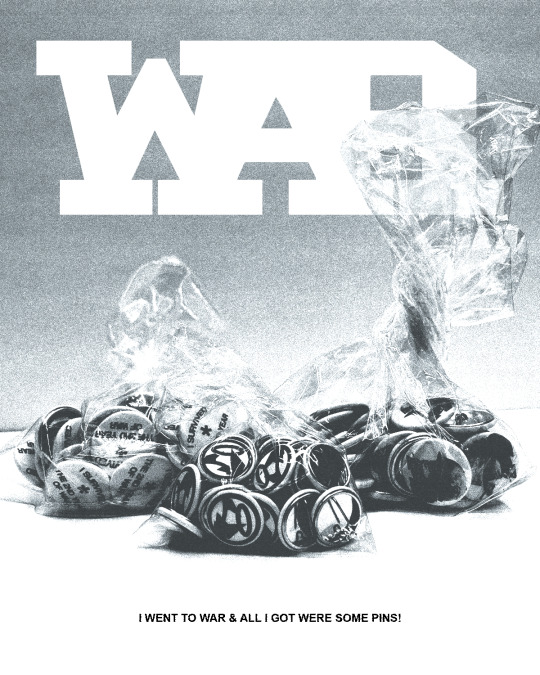
Quick Edit for some pins I made.
Billiard Light, 2 Poster Papers, taken on iPhone.
#streetwear#warlabel#nigo#bape#film photography#streetwearbrand#warboy#graphicdesign#pharrel williams#photography#archivefashion#complex#highsnobiety#archive#filmcommunity#humanmade#murakami#nerd#streetdesign#undercoverism#undercover
8 notes
·
View notes
Text

Off__White Rebranding Concept Design.
#off white#virgil abloh#kanye west#kanye yeezy#street fashion#streetdesign#streetart#fashionbrand#fashion art#high fashion#haute couture#style#stylist#louis vuitton#designideas#designer#streetwear#fashion design#designart
2 notes
·
View notes
Text
A Rant: No Turn on Red (NoTOR) State Pre-Emption
TLDR: The State of Indiana has continuously targeted Indianapolis with state pre-emption policies, especially around transportation. No Turn on Red Policies are good when implemented correctly. This policy will have adverse impacts on living breathing humans as well as society as a whole. Hopefully this will push Indy to implement for significant solutions to solving the pedestrian crash crisis in the city.
Indiana Got Me Big Mad
Today, I had a two-hour period of intense frustration and anger over the usual song and dance that happens here in Indianapolis. To my dismay, I discovered that a state senator had surreptitiously inserted an amendment into Indiana House Bill 1050. The main body of the bill has various legislative changes to policies around cars (defining "alternative fuel", changing vehicle tax policies, etc.). The offending Senate Amendment #5, displayed in big, bold letters:
"A CONSOLIDATED CITY MAY NOT ADOPT AN ORDINANCE REQUIRING THE INSTALLATION OF A SIGNPROHIBITNG A TURN DESCRIBED IN [reference to subsection defined earlier in the amendment that says drivers can turn right on a steady red]."
There are a few interesting things of note here:
The policy applies only to "Consolidated Cities". Indianapolis is (I believe) the only consolidated city in the state. This rule would not apply to any other jurisdiction.
This was a response by the senator to the Indianapolis City-County Council's proposal to post signs restricting right turn on red in Downtown Indy, specifically on roads that are designed to move cars quickly. This is a bare-bones pedestrian safety solution, and because the roads cross through downtown and near a major university campus (IUPUI), it's one of the few places in this city that has people walking around.
The State Senator that submitted this amendment is named Aaron Freeman, the representative from Indiana Senate District 32. This district comprises of the southeast corner of Indianapolis (arguably the most rural quadrant of the city) and parts of suburban Greenwood and unincorporated lands south of the city. It is one of, if not the most conservative part of Indianapolis, and (this is just my speculation) provides legitimacy for the State Legislature to impose conservative state pre-emption on a mostly Democrat-represented city. Is this a punishment for the city because of how they vote? Who can say.
Aaron has become something of a transportation villain here in Indy. Before his crusade to preserve the sanctity of the ability to turn right on red (only in Indianapolis), he has also consistently fought against one of IndyGo's proposed Bus Rapid Transit (BRT) line - the Blue Line. He has done this every legislative session since at least 2019. His main gripe? The Blue Line would have dedicated lanes, removing one or two lanes from the currently SEVEN lane-wide East Washington Street. Dedicated lanes are integral for BRT to operate effectively; transit is not rapid if it's sitting in traffic (generally).
But dedicated lanes are Communism; they control the means of production of those lanes for the masses and removes them from the enjoyment of F-150-driving, red blooded, meat-eating, gun-toting traditional families. And for that reason, Aaron cannot allow this injustice to happen quietly.
Thankfully for the urbanites of Indy, every strategy Aaron has tried so far has failed to be passed into law. Hopefully it stays that way.
This is not the first case of the State of Indiana pre-empting Indianapolis in a way that relates to transportation, safety, and the built environment. The state passed a ban on funding light rail projects in 2014. A couple sessions ago, they tried to take away zoning control from the City of Indianapolis and give the power to townships; for some reason the township governments still exist in Indiana even though their land is incorporated by a city. It's very dumb way to operate local government, and this was a very dumb proposal, which is why it wasn't adopted. The state has also pre-empted the city from creating its own gun laws, local minimum wage, rent control, paid sick leave requirements, and plastic bag fees.
There are more examples of the atrocious pre-emption Indiana has done, but I want to move onto why this made me so mad; what is No Turn on Red and why is it important?
NoTOR is the Bare Minimum
Not Turn on Red (NoTOR) is a traffic control method that restricts drivers from turning right at red lights. A lot of drivers may find this annoying, but it is an important, easy, and affordable way to reduce pedestrians being hit by cars turning right on red. According to a five-year study examining crashes in Downtown Indy, over half of pedestrian-related crashes were the result of vehicles not yielding to pedestrians at signalized intersections. source. Anecdotally, pedestrian crashes across Indy have continued to rise year-over-year for the past five years. It is truly a crisis.
There is a provision in the amendment that says a driver must stop at a steady red light for 120 seconds before turning right on red. Theoretically, this means drivers should be completely stopped for a period of time that would allow them to see someone crossing on their right.
This is also an ignorant safeguard. You might as well tell people not to speed on the highway. Very few people follow this (even the Federal Highway Administration say so) and it is rarely enforced.
The reason so many pedestrians are struck by vehicles turning right on red is a combination of factors:
The design of the intersection. Larger curb radii can allow for cars to take turns faster; lack of crosswalk markings doesn't remind drivers to check for pedestrians; having stop bars too close to where pedestrians cross reduces the amount of time a driver has to look right while crossing.
Driver behavior. On top of a general increase in distracted driving, there is a documented increase in reckless driving from the pandemic, however pedestrian deaths had been increasing even before this. In addition to this recent development, FHWA outlined how drivers really behave when turning right on red:
"Motorists are so intent on looking for traffic approaching on their left that they may not be alert to pedestrians on their right. In addition motorists usually pull up into the crosswalk to wait for a gap in traffic, blocking pedestrian crossing movements. In some instances, motorists simply do not come to a full stop."
Vehicles have become larger, placing drivers higher. This obstructs their view, especially of people that may be below their sight lines (like children and people in wheelchairs). It also extends their vehicle's hoods and their bodies, which can inadvertently hit pedestrians, especially on tight urban streets.
Lack of Enforcement. I will be the first to admit that traffic enforcement can be tricky; traffic stops can lead to tragedy very quickly. That being said, the response should not be just not enforcing traffic laws. Two options stand out in my mind: better training for officers around traffic stops and remote enforcement.
In a 2021 survey of police analyzed by the Rand Corporation, 42% of responding officers said their department has never provided traffic stop training, and only 6% strongly agree that they have received adequate training for traffic stops involving noncompliant drivers.
Remote enforcement is not without its flaws, and requires a deeper dive in another post. In short; red light cameras work as a safety improvement. They reduce more fatal crashes between both vehicles and pedestrians. They can also cause an increase rear-ending by more aggressive drivers and other less life-threatening crashes. But if we have to pick one method over another, we should pick the one where less people are killed or gravely injured.
There are issues with equitable placement of cameras, as well as the matter of ticketing drivers for using a roadway in the manner it was designed, rather than what a sign says. If the design of a street network is oriented to the fast movement of vehicles instead of pedestrian safety, drivers are more likely to drive over the posted speed limit and turn right on red without stopping, because that's how the road was designed to be used.
Red light cameras have been legislatively prohibited in seven states, and are de facto prohibited in Indiana. Have those entities repealed or prohibited them out of some sort of duty to the low-income drivers that could be adversely affected by remote enforcement?
No, it's mostly because drivers complain about having to obey traffic laws to the letter and look at it as a cash grab for cities to generate income (which, honestly, could be partially true). However, repealing red light cameras has been shown to increase traffic deaths, and the selfishness and entitlement of drivers is entirely to blame for that.
Implementation
The Federal Highway Administration has a very helpful page on how to effectively implement NoTOR.
Restricting right turns on red is implemented through installing signage, sometimes in combination with a Leading Pedestrian Interval (LPI), which gives pedestrians a few-second head start to enter the crosswalk before vehicles are given a green light. This is a measure that reduces pedestrians being hit by vehicles that impatiently want to turn right on green.
Siting NoTORs appropriately is important. FHWA explicitly says that they should be present in areas with high pedestrian activity (however it does not define what that threshold is, leaving the interpretation open to state and local DOTs). In the case of the Downtown Indianapolis proposal, these signs would have implemented NoTOR on arterial roadways with high traffic volumes in the most pedestrian active region in the city (if not the state). It is more than appropriate to implement this policy.
Anecdotally, I have seen NoTOR work. I recently visited Philadelphia and spent pretty much all of my time in Center City, where NoTOR is implemented at almost every intersection. As a pedestrian, it made me feel far safer than I ever did walking around in Downtown Indy.
The Human Cost of NoTOR Prohibition
The prohibition of NoTOR has a devastating impact on human life, as evidenced by the research indicating an increase in serious injury and death when NoTOR is not restricted. But the human toll extends far beyond physical harm. Those who are seriously injured face an array of financial burdens, including medical debt, lost income, and potential job loss. The emotional trauma of a traffic accident can be just as damaging, leaving lasting effects on mental health and quality of life.
The human cost doesn't stop there; being seriously injured can mean being saddled with medical debt, missed work from recovery, losing a job because of recovery or inability to do the work required, loss of income, and permanent changes in health and quality of life. This is on top of the mental trauma of being seriously injured or losing a loved one to a traffic accident.
There were over 3,400 pedestrian deaths in the United States in 2022. In 2021, over 60,000 pedestrians were injured by drivers. Each one of these individuals had a life, a family, and a community that cared about them. Their sudden and violent deaths or injuries leave a permanent scar on the lives of those who knew and loved them.
And yet, all of this suffering is caused by a refusal to inconvenience drivers for a few minutes. The State of Indiana and Aaron Freeman seem to place little value on the safety and well-being of pedestrians, prioritizing the convenience of drivers over the lives and health of their fellow citizens. The cost of this callous disregard for human life is simply too high to bear.
At least according to the State of Indiana and Aaron Freeman.
How to Get Around the NoTOR Ban
There are ways that the City of Indianapolis can get around the NoTOR Ban, and it is primarily through intersection and street design improvements.
There are soft infrastructure changes like setting back where cars stop with signs and paint, painting more visible crosswalks, painting street murals, and implementing Leading Pedestrian Intervals signal timing.
There are also hard infrastructure changes like reducing curb radii so drivers have to significantly slow down before turning right. Reducing roadway lanes or lane widths and implementing streetscape improvements like street trees have also been shown to subconsciously cause drives to drive slower because it increases their awareness of other vehicles and obstacles around them.
Zooming out to a network-level view, considerations should be given to more unique approaches to improving pedestrian safety. Implementing mid-block crossings can provide a safer crossing for pedestrians because it reduces the potential points of conflict; drivers won't be pre-occupied with looking left while turning right and pedestrians don't have to look over their shoulders when crossing. All they have to worry about is oncoming traffic. There should also be consideration given to completely eliminating private vehicle traffic entirely from certain portions of downtown.
Conclusion
Although the pre-emption legislation may be exasperating and expected to prolong the unsafe conditions in Indianapolis' busiest pedestrian zones, there is a possibility that it could prompt much-needed infrastructure improvements to enhance pedestrian safety. Over the last three decades, Indianapolis has made significant strides from its former downtown one-way traffic nightmare. However, there is still much more progress to be made in creating a more livable city, and this legislative decision might serve as a motivating force to achieve this goal.
#NoTurnOnRed#PedestrianSafety#TrafficLaws#UrbanEnvironment#TrafficAccidents#RoadSafety#VisionZero#SafeStreets#Walkability#TransportationPolicy#TrafficViolations#TrafficEnforcement#StreetDesign#UrbanPlanning#ActiveTransportation#SustainableTransportation#PublicHealth#TrafficEngineering#IntersectionSafety#StreetSafety#TrafficSafety#CityLife#WalkableCities#UrbanMobility#TrafficManagement#MobilityJustice
0 notes
Text
Margate ~ I embarked on a memorable trip to Margate, UK. The highlight of my visit was exploring the Turner Contemporary, where a captivating exhibition stirred my artistic sensibilities. The thought-provoking pieces and the breathtaking sea views from the gallery left a lasting impression. Equally enchanting was the experience of wandering through the charming streets of Margate, discovering quaint cafes, vibrant street art, and the unique character that defines this coastal town. The blend of art, friendship, and the coastal ambiance made my Margate adventure an unforgettable chapter in my design journey.
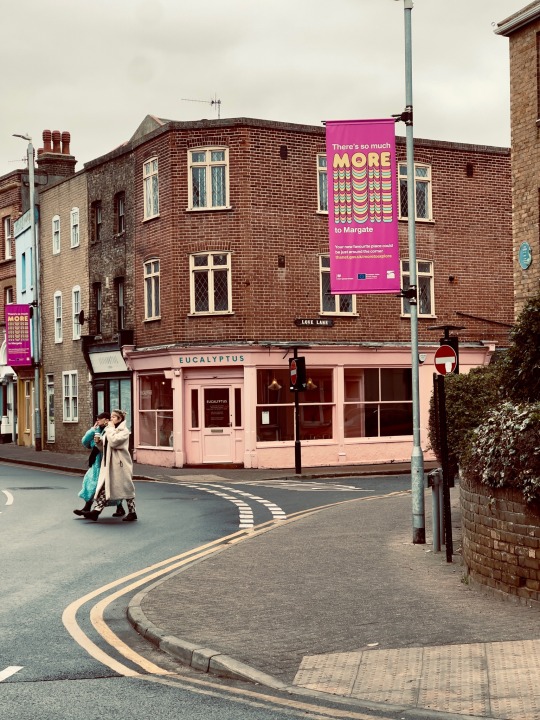


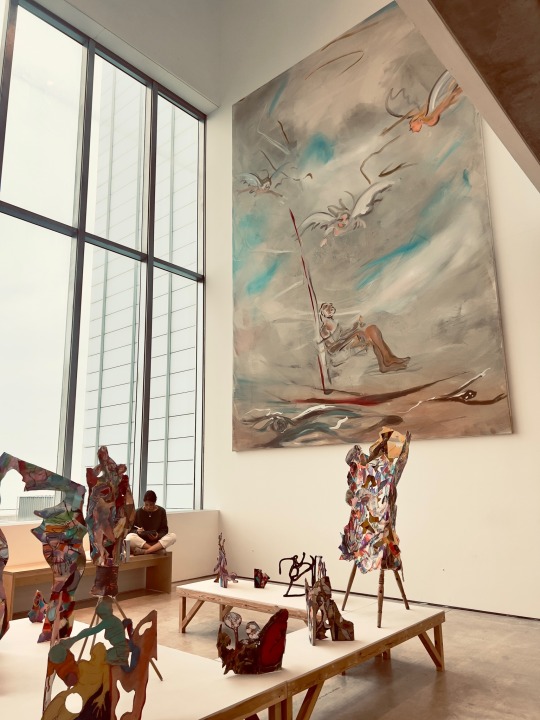






1 note
·
View note
Text
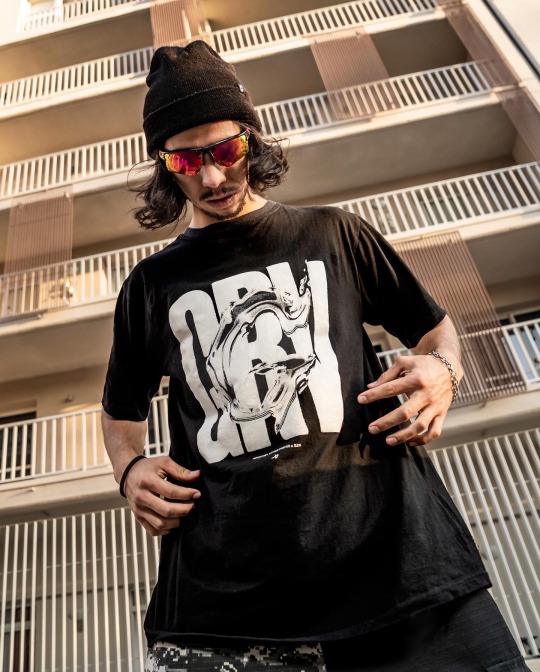
Diseño de Remera - GRV x BZN 2022
1 note
·
View note
Photo

Follow @urbandesign.lab Global Street Design Guide. NACTO Designing Cities Conference, Austin, DM for credits/Removal. . . . . Photoshop Masterclass (2 Days Integrated Workshop) Session Details: • Day 1: 18th of February, 2023 | Urban Mapping • Day 2: 19th of February, 2023 | 3D Urban Visualization 🔗Registration link in the bio Limited Seats available! Early Bird registration ends on 12th February, 2023 . . . . #urbandesign #roadsofcity #urbandesigner #streetdesign #cityroads #citystreets #streetsofindia #livingstreets #transportationdesign #transportationservices #streetsindia #roadsofindia #roadesign #roadspain #designintersection #designintersections #roadintersection #streetdesign #intersection #showitbetter #intersectional #pimpmyplan #streetdesign #nacto #illustrarch #archolution #junctiondesign #sidewalk #urbandesignlab #urbandesign #diseñourbano #урбанистика #designurbanistic (at Austin, Texas) https://www.instagram.com/p/CoNdLkYPzTR/?igshid=NGJjMDIxMWI=
#urbandesign#roadsofcity#urbandesigner#streetdesign#cityroads#citystreets#streetsofindia#livingstreets#transportationdesign#transportationservices#streetsindia#roadsofindia#roadesign#roadspain#designintersection#designintersections#roadintersection#intersection#showitbetter#intersectional#pimpmyplan#nacto#illustrarch#archolution#junctiondesign#sidewalk#urbandesignlab#diseñourbano#урбанистика#designurbanistic
0 notes
Photo

A raised sidewalk in Jakarta. The parking lot to the right is at the same level as the street to the left. By raising the sidewalk (or keeping it raised) people do not have to walk through puddles and such. And drivers are forced to slow down.
0 notes
Photo
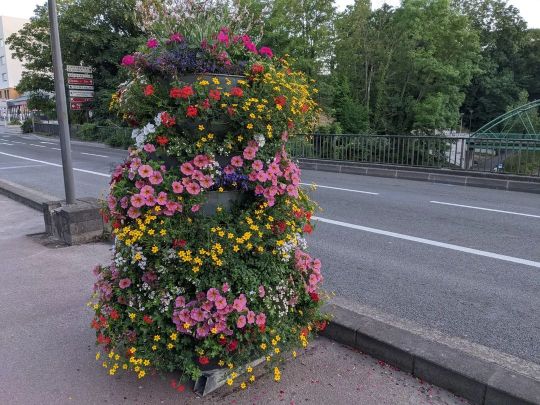
Near the the vert Galant train station #floraldisplay #streetgarden #gardeninspiration #streetartparis #travelogue #paris #streetdesign (at Vaujours) https://www.instagram.com/p/CfjUeIxI90h/?igshid=NGJjMDIxMWI=
1 note
·
View note
Text
new desgin available 🧸✨

Available in the official store 👇🏼
#art#beargraphic#bear#teddybear#shirts#beargraffiti#fashion#Illustration#streetdesign#graffiti#design#vintage#funnybear#graphicdesign#drawing#tshirt#graphic#1k#style
1 note
·
View note
Text

Cover for I Survived The 2nd Year of War
#streetwear#warlabel#nigo#bape#film photography#streetwearbrand#warboy#graphicdesign#pharrel williams#photography#wargirl#archivefashion#complex#highsnobiety#archive#filmcommunity#humanmade#murakami#nerd#streetdesign#undercoverism#undercover
4 notes
·
View notes
Text

Off__White Rebranding Design Concept.
#off white#virgil abloh#kanye west#kanye yeezy#street fashion#streetdesign#streetart#fashionbrand#fashion art#high fashion#haute couture#style#stylist#louis vuitton#designideas#designer#streetwear#fashion design#designart#logoconcept#creative logo#logo design#logoideas#creativeagency#creativity
0 notes
Text
More street art is here. Check out our LED neon signs.
⚡neonartdesigns.com⚡
#streetart #graffiti #streetartsign #kawart #expression #streetdesigns #ledneon #customneonsign
https://www.neonartdesigns.com/collections/all
0 notes
Text
Follow @revelooshen !! Revelooshen Trucker Cap.
Link in Bio!!
•
•
#truckerhats #explore #explorepageready #hats #graphicdesign #truckerhat #fyp #tshirtdesign #apparel #apparelbrand #clothingline #foryou #forsale #illustrationart #illustration #artwork
#visualart #digitalart #streetdesign #merch
#graphicdesign #graphicdesigner #artworkforsale
#artwork #appareldesign #streetweardesign #streetwearbrand #streetwear #merchdesign
#merchbrand
#trucker#trucker cap#truckerhat#baseball#baseball cap#baseball hat#fitted#fitted cap#fitted hats#fittedhats#hatstyle
1 note
·
View note
Photo

Ext. Outside, Art District Fabulous Las Vegas, Nevada Living My Dreams N it feels Amazing! #lifeofadventure #art #inspire #mindset #growth #support #artist #fashion #fashionstyle #fashionstreetwear #streetwearfashion #streetwear #streetart #streetfashion #streetfashionstyle #photooftheday #picoftheday #streetphotography #urbanphotography #urbanmodel #streetmodel #streetdesign #streetfashiondesigners #explore #undergroundartist #enlightenment #purpose #mission #journey #underground @smokinmonsters (at Art District, Downtown Las Vegas) https://www.instagram.com/p/ClwLp-LpuO6/?igshid=NGJjMDIxMWI=
#lifeofadventure#art#inspire#mindset#growth#support#artist#fashion#fashionstyle#fashionstreetwear#streetwearfashion#streetwear#streetart#streetfashion#streetfashionstyle#photooftheday#picoftheday#streetphotography#urbanphotography#urbanmodel#streetmodel#streetdesign#streetfashiondesigners#explore#undergroundartist#enlightenment#purpose#mission#journey#underground
1 note
·
View note
Photo
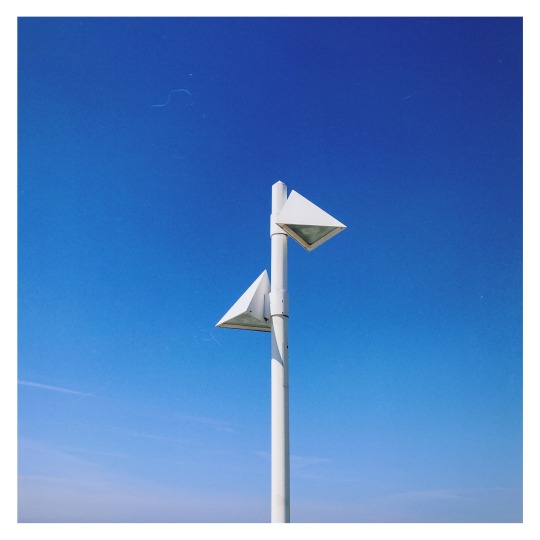
de straatlampen hier vond ik leuk
4 notes
·
View notes